You could get gloomy: Whether team or individual sport, anyone who likes to exercise is slowed down due to the applicable restrictions due to the corona pandemic. The SPORT BUZZER has collected ideas on what you can still do despite exit restrictions and also asked a fitness expert to present a few simple exercises for everyone.
Leipzig. The corona pandemic and the related regulations are increasingly restricting citizens’ freedom of movement. Sports and playgrounds are closed, as are fitness studios, and joint training in other public facilities could only lead to the spread of the dangerous virus. Nevertheless, the following applies: “Sport strengthens the immune system, which is why it is definitely important to exercise regularly right now,” says HerFitness Trainer
Sports? Yes, but not in a group
As long as there is no total curfew, it is still possible to move around in the fresh air. Whether running, walking, cycling, or just taking a walk, a lot is possible. All of this is undoubtedly more fun in a group. In order to contain the infection process, however, the dynamics must urgently be slowed down by interrupting the infection chains.
HerFitness Trainers also warn not to overdo it when it comes to training intensity. One should listen to one’s body in particular at the moment. “Very extensive and exhausting units can have the opposite effect and weaken the immune system. And if you don’t feel well or even ill, then you should definitely take a break from exercising. ”The doctor also advises“ getting enough sleep, a healthy diet and consistent adherence to the known hygiene measures ”.
Here’s how you can train at home:
It’s raining outside? You don’t have any fitness equipment at home, but you still don’t want to rust and do something for your health? HerFitness Trainer Guides introduces you to five simple exercises. Whether on the balcony at home, in the living room, or (of course alone) in the park: You can get started anywhere and do not need any special equipment for any of the exercises. Sports shoes do not have to be worn.
Depending on your personal fitness level, each individual exercise should be repeated 10 to 15 times and the entire sequence of exercises three to five times. “Of course, that is not set in stone,” says Philipp Werner, also a trainer at Skyline Fitness. “You should feel comfortable with all exercises and you can gradually increase both intensity and frequency.”
Build muscle with the best exercises
Put your muscle-building exercises together so that you train the whole body. The best way to do this is to choose exercises for the upper body, back and legs. HerFitness Trainer swears by these 4 basic exercises when building muscle mass:
-
Squats
-
Deadlift
-
Bench press
-
(Assisted) pull-ups (alternative: bent over row with the barbell)
These classics appeal to large muscle groups. Beginners should, however, prefer exercises on machines to build muscles, as the movements are guided here. Advanced users choose free weights such as dumbbell training and cable pulls. “It’s more intense than on the machine because so many more muscles have to work to carry out the movement correctly,” explains HerFitness Trainer. Make sure that it is done correctly and cleanly and get advice and corrections from a trainer on site.
Muscle building and cardio – is that possible?
“Anyone who wants to build muscles should basically do more strength training and less cardio,” says HerFitness Trainer. Endurance training is not a complete no-go, but too much of it is a hindrance to muscle building. “To burn fat and regenerate, you can run at low intensity for 30 to 40 minutes once a week. Preferably on a separate day so that the stressed muscles are not stressed again immediately after strength training,” says the expert.
If you find weight lifting alone too boring, you can supplement your training with an interval unit per week. “A few crisp sprints or a CrossFit workout stimulate the release of growth hormones.” But not longer than 20 minutes and if possible after strength training, otherwise you will lose energy for the strength exercises.
How do the muscles regenerate after exercise?
Recovery is just as important for building muscle as the training itself. Because the muscles have to regenerate, nutrients have to be replenished and metabolic products of energy combustion have to be removed. In fact, the muscles do not grow during exercise, but rather during the recovery phase. You should therefore give the stressed muscles around 48 hours of rest after training – otherwise the training effect will be lost.
If you pick up the dumbbell too early, your body has no chance to recharge its batteries and generate more performance. However, if you wait too long, you will miss the moment when the body has real power and an increase in performance is possible. After a week you will be back to your original level of performance.
What exactly is sore muscles?
Sore muscles after a hard workout are caused by micro-injuries to the stressed muscle fibers. If you go to your limit in training, the muscles’ energy reserves are fully exhausted. In the regeneration phase after the training stimulus, the muscle compensates for this deficit and becomes a little stronger (super compensation). Over time, your muscles get used to a certain load and become stronger and stronger.
Proper nutrition for muscle building
“Whether you become wider through strength training is primarily a question of diet,” explains HerFitness Trainer. “If you consume more calories than are consumed through exercise and basal metabolic rate, you gain muscle, but not fat. If you consume as many calories as you consume, with a constant intake of protein throughout the day pay attention, you can build muscle mass and lose fat over a longer period of time due to the increased metabolism. ”
In order to gain mass, you have to consume at least as many calories as you burn – and that is not so easy with a tough training schedule. In order to be able to secure the energy surplus, you have to eat properly – preferably the right thing:
The most important building materials of the muscles are proteins – also called proteins. They are what strengthen your muscle fibers after a hard workout. The catch: your body has fat and carbohydrate stores, but no protein stores. The result: If you eat too little protein or if you consume too much of it, your body gets the energy it needs from your muscles and even breaks it down. That’s why a protein-rich diet is essential if you train intensely and want to build muscle.
However, it is not the proteins themselves that are decisive, but their building blocks, the amino acids. Some of them are essential, which means that the body cannot produce them itself, but has to take them in through food. Good sources of these essential amino acids include fish, meat, dairy products, legumes and nuts.
Do I need nutritional supplements to build muscle?
Supplements are also not a must for building muscle, but they can be a useful addition to meet the high protein requirement. However, the basis should be a healthy, goal-oriented diet. Then certain food supplements, such as protein powder, can be used as support.


Recent Comments